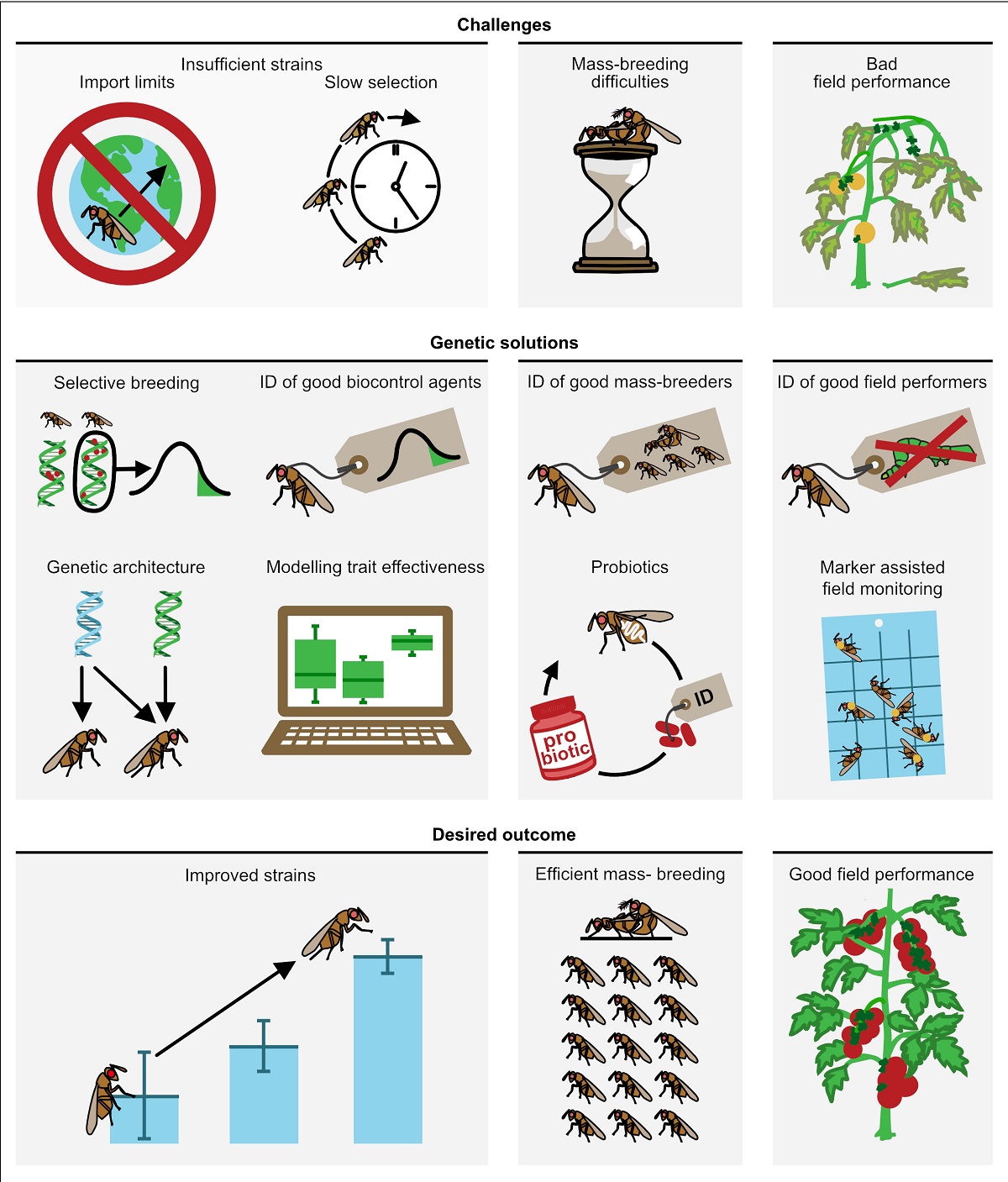Biological control is widely successful for controlling pests, but effective biocontrol agents are now more difficult to obtain due to more restrictive international trade laws. Coupled with increasing demand, the efficacy of existing and new biocontrol agents needs to be improved with genetic and genomic approaches. Although they have been underutilised in the past, applying genetic and genomic techniques is becoming more feasible from both technological and economic perspectives. We review current methods and provide a framework for using them, incorporating evolutionary and ecological principles. First, it is necessary to identify which biocontrol trait to select and in what direction. Next, the genes or markers linked to these traits need be determined to better target their selection, followed by how to implement this information into a breeding program. Choosing a trait can be assisted by modelling to account for the proper agro-ecological context, and by knowing which traits have sufficiently high heritability values. We provide guidelines for designing genomic strategies in biocontrol programs, which depends on the organism, budget, and desired objective. Genomic approaches start with genome sequencing and assembly. We provide a guide for deciding the most successful sequencing strategy for biocontrol agents. Gene discovery involves quantitative trait loci (QTL) analyses, transcriptomic and proteomic studies, and gene editing. Improving biocontrol practices include marker-assisted selection, genomic selection and microbiome manipulation of biocontrol agents, and monitoring for genetic variation during rearing and post-release. We conclude by identifying the most promising applications of genetic and genomic methods to improve biological control efficacy.

